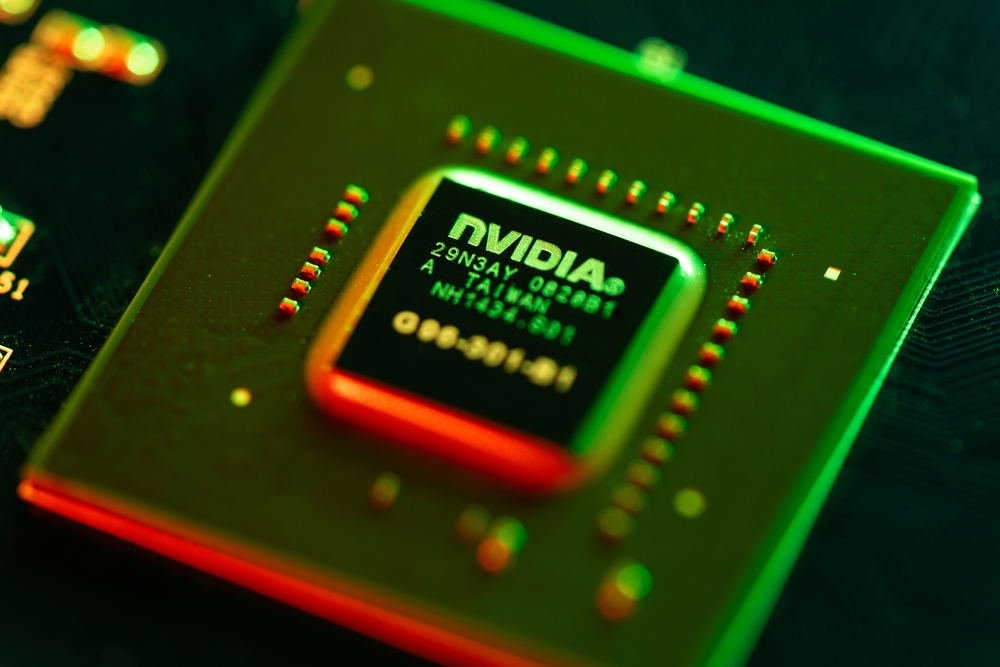Chief executive officer Jensen Huang demonstrated the ‘very immense’ Blackwell artificial intelligence GPU and actual world artificial intelligence use cases from Siemens and Mercedes.
Thriving in its increasing stock price and the sizzling artificial intelligence (AI) boom, Nvidia, on March 15, revealed various initiatives to further leverage artificial intelligence.
This includes a partnership to develop improved humanoid robots, a novel Blackwell computer chip, and how to utilize Apple’s Vision Pro spatial computer platform to design buildings and factories.
The statements originated from a two-hour keynote on March 18 by Jensen Huang, NVIDIA’s co-founder and chief executive officer, at the yearly GPU Technology Conference (GTC).
Nvidia Obligated to Develop Superior GPUs
Beginning with the firm’s foundational technology, he said that the needs of artificial intelligence development will aggressively boost the amount of information involved. Further, he said they will be compelled to develop superior GPUs. The present Hopper line remains effective prior to the unveiling of ‘an enormous GPU.’
The new hardware was named after David Blackwell, a mathematician. According to Huang, it is both a GPU and a platform. Further, he demonstrated the new B200 chip at its core and said that the GPU’s appearance is different compared to before.
Huang also noted that they are beginning to do excellent work in the next robotics generation, which will involve humanoid robotics. They have the needed technology to envisage generalized human robotics.
To arrive here, Huang announced Project GR00T (Generalist Robotic 00 Technology). The backronym invokes the legendary Marvel Comics character. On stage, Huang demonstrated various artificial intelligence-enhanced robots to the audience. For instance, there was the Jetson Thor computing platform made to execute intricate tasks and interact naturally with people.
Nvidia’s Comprehensive System to Training Humanoid Robots
Huang noted that Nvidia is creating a comprehensive system for training humanoid robots capable of learning from visual content, including virtual reality and videos, combining several associated projects and divisions within the chipmaker.
The firm revealed it developed the Nvidia Isaac Lab to train GR00T at scale and create the NVIDIA Osmo. The latter is a compute transposition service that synchronizes the training and gathers workflows across Nvidia DGX systems for training. Additionally, there are the Nvidia OVX systems for simulation and the Nvidia AGX and IGX systems for hardware-in-the-loop authentication.
Jetson Thor is part of NVIDIA’s updates to the Isaac robotics network. According to Huang, the robots are being trained for actual-world adaption in its Isaac reinforcement learning gym. Somehow, human robotics is possibly easier due to the availability of imitation training data that can be provided to the robotics.
Humanoid robotics may be more valuable in the present world since it was made to be something that people can interoperate and work properly in. Omniverse refers to the virtual gym for artificial intelligence robotics training, and Huang revealed an illustration that he considered ‘somewhat crazy, but will be quite near to tomorrow.’
The demo portrayed a robotics building defined as a ‘digital twin of a 100000-square-foot warehouse’ occupied by independent systems that interact with each other, including cars and humans. This environment will ensure the quick development of physical plant design and engineering.
Integration of AI to Omniverse
In addition, it will improve the coordination of the human and robot work within. Siemens is the globe’s biggest industrial engineering and operations platform. It is developing the industrial metaverse and linking Xccelerator, its crown jewel, to Nvidia Omniverse.
Vision Pro headset by Apple is also in this picture. Huang revealed that Omnverse Cloud streams to the Vision Pro, which is quite remarkable. Since all the CAD and various design tools are incorporated and linked to Omniverse, this kind of workflow is possible.
Huang also said the automotive sector was a clear place to harness artificial intelligence innovation. Specifically, he noted that every movable thing is going to be robotic since it is safer and more convenient.
Automotive will be one of the biggest sectors and will involve the development of the robotic stack from top to bottom. Huang claimed that Jetson Thor can be utilized in autonomous cars. Its shipping will happen in 2025 and be incorporated into the Jaguar Land Rovers and Mercedes.
The NVIDIA chief executive officer also claimed that the firm is developing AI platforms for other companies. Examples include Agility Robotics, 1X Technologies, Fourier Intelligence, Boston Dynamics, Sanctuary AI, XPENG Robotics, Unitree Robotics, Apptronik, and 1X Technologies.
According to Huang, developing foundation models for general humanoid robots is an exciting problem that needs to be addressed in artificial intelligence. The enabling technologies are merging for leading roboticists globally to take major steps towards artificial general robotics.
